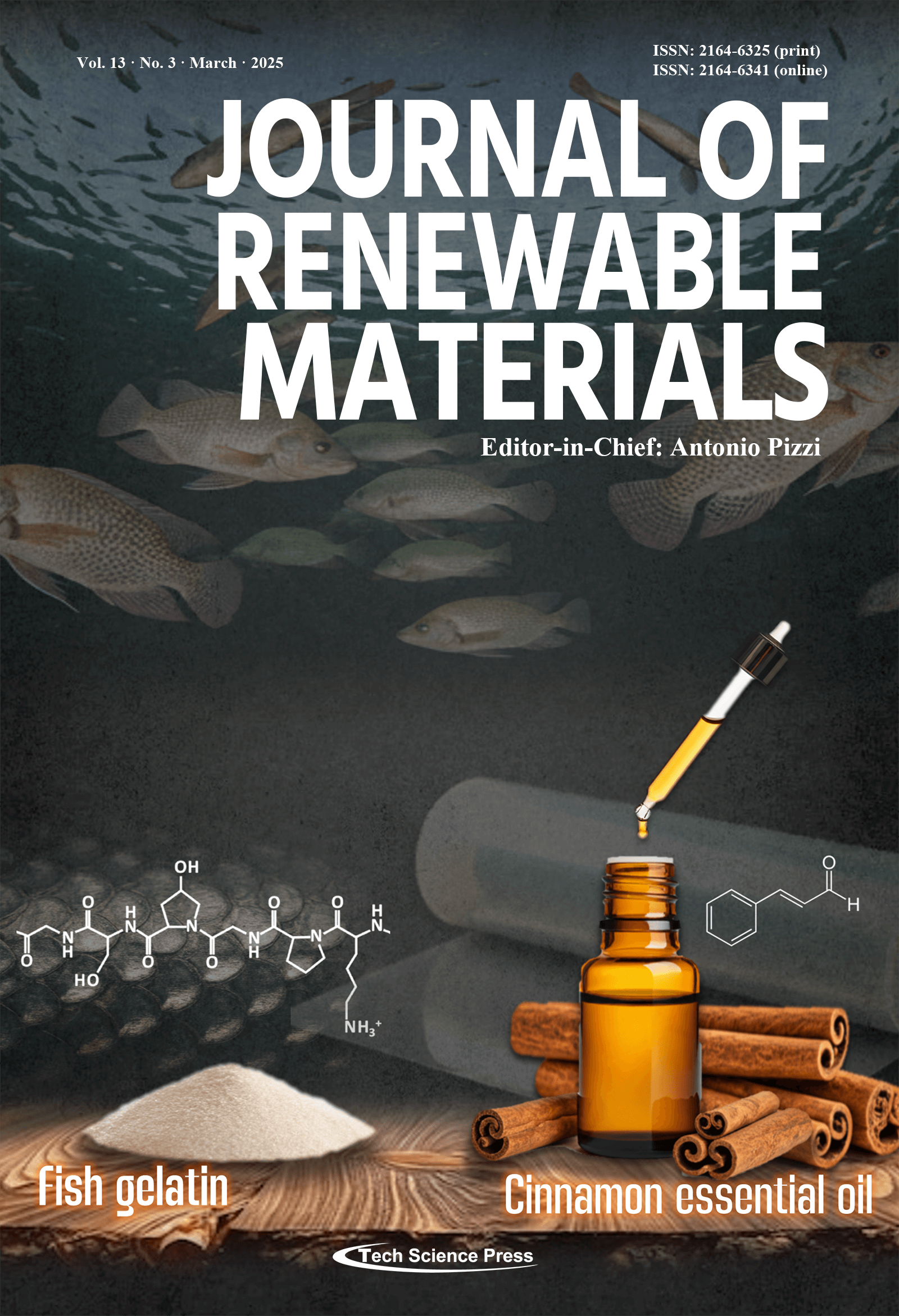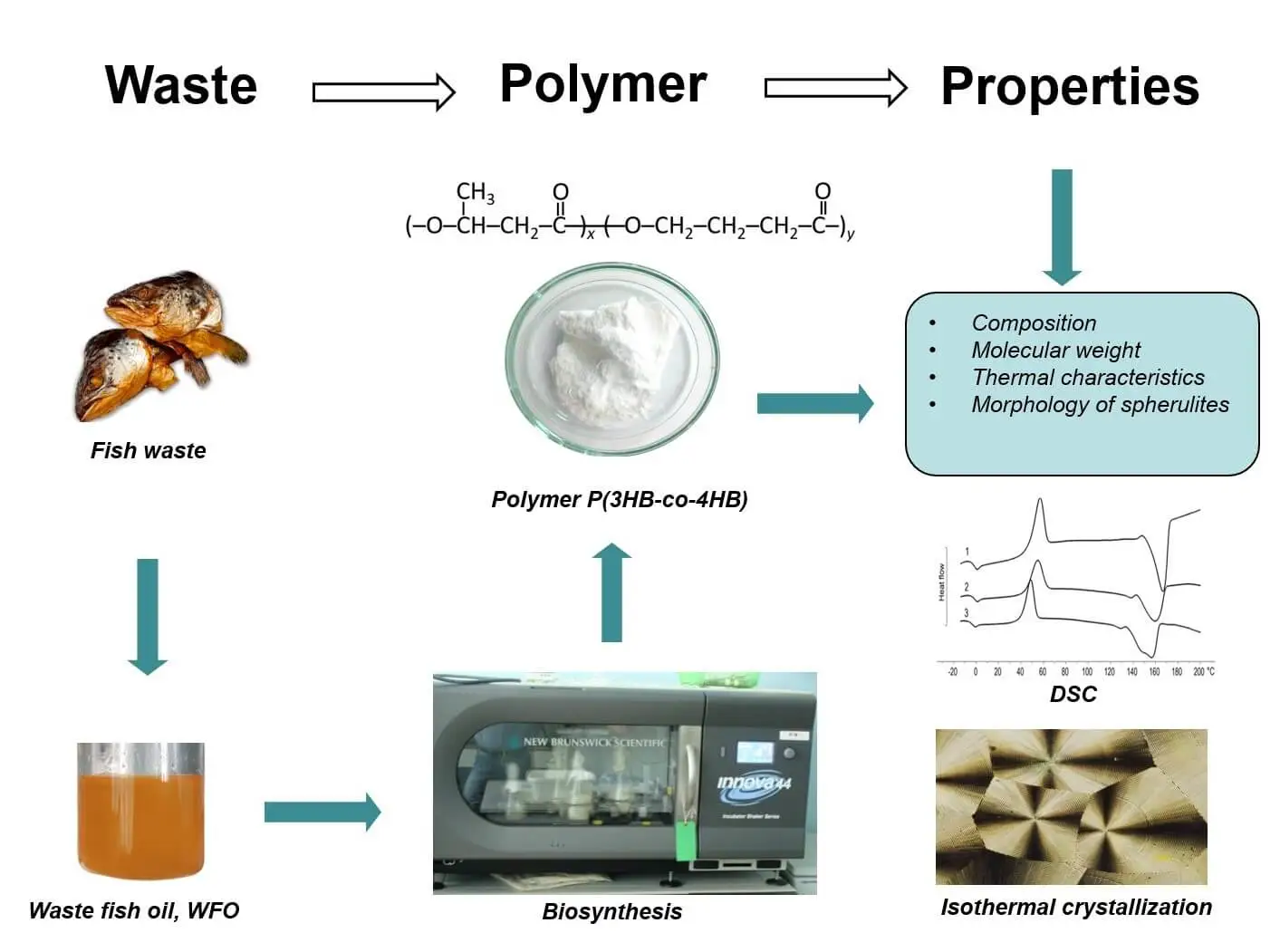
The Journal of Renewable Materials (JRM) is an interdisciplinary journal publishing original research covering all aspects of renewable materials, namely bio-based materials, sustainable materials, green chemistry and including recycling and recovery of spent materials. The scope of the journal is devoted to reports of new and original experimental and theoretical research in the areas of materials, engineering, physics, bioscience, processing, environmental science and chemistry, which are related to renewable materials and their applications.
Ei Compendex/Engineering Village (Elsevier); Scopus Citescore (Impact per Publication 2023): 4.1; Citescore Ranking: Environmental Science (miscellaneous): 55/163 (Q2); Materials Science (miscellaneous): 59/150 (Q2); SNIP (Source Normalized Impact per Paper 2023): 0.613; Google Scholar h5-index 31, ranking 5 in Wood Science &Technology; Chemical Abstracting Services; Polymer Library; Baidu Xueshu (China); Portico, etc...
Notice: Please make new submissions of JRM to the new system (ScholarOne) (https://mc03.manuscriptcentral.com/jrenewmater) from 25 September 2024. To view your previous submissions, please access TSP system (https://ijs.tspsubmission.com/homepage).
 Open Access
Open Access
ARTICLE
Journal of Renewable Materials, Vol.13, No.3, pp. 413-432, 2025, DOI:10.32604/jrm.2024.058775 - 20 March 2025
Abstract The article presents the results of a study on the possibility of synthesizing biodegradable poly(3-hydroxybutyrate-co-4-hydroxybutyrate) [P(3HB-co-4HB)] from renewable waste fish oil (WFO) by the Cupriavidus necator B-10646 bacterium. For the first time, waste oil generated during the processing of Sprattus balticus in the production of sprats was used as the main carbon substrate for the synthesis of P(3HB-co-4HB), and ε-caprolactone was used as a precursor instead of the more expensive γ-butyrolactone. Samples of P(3HB-co-4HB) with a 4HB monomer content from 7.4 to 11.6 mol.% were synthesized, and values of the bacterial biomass yield and the total yield of the… More >
Graphic Abstract

 Open Access
Open Access
ARTICLE
Journal of Renewable Materials, Vol.13, No.3, pp. 433-447, 2025, DOI:10.32604/jrm.2024.02024-0006 - 20 March 2025
Abstract Fish gelatin films have emerged as eco-friendly packaging materials due to their biodegradability and excellent film-forming properties. This study investigated the effects of varying homogenization rates (0, 6500, 9500, 13,500, 17,500, and 21,500 rpm) on the functional and structural properties of fish gelatin films enriched with cinnamon essential oil (CEO). Homogenization reduced droplet sizes and narrowed droplet size distributions in the film-forming emulsion (FFE). At a homogenization rate of 9500 rpm, the films exhibited excellent mechanical extensibility, reduced surface irregularities, and enhanced smoothness. The highest (p < 0.05) tensile strength and elongation at break were observed… More >
Graphic Abstract

 Open Access
Open Access
REVIEW
Journal of Renewable Materials, Vol.13, No.3, pp. 449-495, 2025, DOI:10.32604/jrm.2025.027523 - 20 March 2025
(This article belongs to the Special Issue: Bio-based/Degradable Materials towards A Sustainable Future)
Abstract The materialization of polybutylene succinate (PBS) belongs to the family of polyesters which are degradable and biodegradable, their biodegradability properties have attracted enormous interest for product development towards different polymer-based applications. Besides its biodegradability, PBS can be derived from petroleum and biobased monomers. At the same time, the latter is the driving factor for its growing interest in bioplastics for fully green and sustainable biobased-derived polymer products. The processes and techniques presented herein, are based on the production of biobased succinic acid monomer to PBS. However, the counterpart biobased monomer 1,4-butanediol (1,4-BDO) production has not… More >
Graphic Abstract

 Open Access
Open Access
REVIEW
Journal of Renewable Materials, Vol.13, No.3, pp. 497-538, 2025, DOI:10.32604/jrm.2024.057248 - 20 March 2025
(This article belongs to the Special Issue: Recent Advances on Renewable Materials)
Abstract This review provides a comprehensive overview of natural rubber (NR) composites, focusing on their properties, compounding aspects, and renewable practices involving natural fibre reinforcement. The properties of NR are influenced by the compounding process, which incorporates ingredients such as elastomers, vulcanizing agents, accelerators, activators, and fillers like carbon black and silica. While effective in enhancing properties, these fillers lack biodegradability, prompting the exploration of sustainable alternatives. The potential of natural fibres as renewable reinforcements in NR composites is thoroughly covered in this review, highlighting both their advantages, such as improved sustainability, and the challenges they More >
Graphic Abstract

 Open Access
Open Access
ARTICLE
Journal of Renewable Materials, Vol.13, No.3, pp. 539-552, 2025, DOI:10.32604/jrm.2024.056813 - 20 March 2025
(This article belongs to the Special Issue: Valorization of Lignocellulosic Biomass for Functional Materials)
Abstract
Bio-based thermoplastic film from flax fiber and fatty acid (FA) was obtained using trifluoroacetic anhydride (TFAA) as an impelling agent. Different quantities of TFAA/FA, size of flax fiber, and fatty acids were applied to investigate chemical structure in relation to the mechanical properties. Decreasing the quantity of TFAA/FA by almost half from 1:4 to 1:2.5 (flax to TFAA/FA) only reduces by 22% the weight percent gain (WPG) and ester content and reducing flax fiber size slightly increases the WPG and ester content. All the treatments showed significant chemical structure modification, observed by FTIR and… More >
Graphic Abstract

 Open Access
Open Access
REVIEW
Journal of Renewable Materials, Vol.13, No.3, pp. 553-582, 2025, DOI:10.32604/jrm.2025.058857 - 20 March 2025
(This article belongs to the Special Issue: Recent Advances on Renewable Materials)
Abstract The growing population and industrialization have led to significant production in agro-industrial sectors, resulting in large amounts of agro-industrial residues often left untreated, posing potential environmental issues. Therefore, finding effective ways to utilize these bio-based residues is crucial. One promising approach is to use these low- or no-value agro-industrial wastes as raw materials for producing renewable biomaterials, including proteins and peptides. Research has extensively explored peptide extraction using plant and animal-based agro-industrial residue. Due to lower processing costs and beneficial bioactive properties, peptides derived from waste could replace synthetic peptides and those extracted from food More >
 Open Access
Open Access
ARTICLE
Journal of Renewable Materials, Vol.13, No.3, pp. 583-597, 2025, DOI:10.32604/jrm.2024.057663 - 20 March 2025
Abstract
This study investigated the potential of locally sourced mushrooms as a sustainable alternative to marine-derived chitosan in papermaking. Chitosan was extracted from four local (Boletus edulis, Suillus luteus, Leccinum aurantiacum, Suillus variegatus), one commercially available (Agaricus bisporus) and one laboratory-grown (Phanerochaete chrysosporium) fungal species. Paper handsheets were prepared using either 100% regenerated paper or a 50/50 blend of regenerated paper and hemp fibres. 2.5% chitosan (based on dry mass) was incorporated into the paper mass, using chitosan sourced from B. edulis, A. bisporus, P. chrysosporium, and crustacean chitosan. Fungal chitosan sources were selected based on multiple factors. B. edulis exhibited the highest chitosan yield… More >
 Open Access
Open Access
ARTICLE
Journal of Renewable Materials, Vol.13, No.3, pp. 599-616, 2025, DOI:10.32604/jrm.2024.057736 - 20 March 2025
Abstract
The accumulation of non-biodegradable plastic debris in the environment raises serious concerns about potential long-term effects on the environment, the economy, and waste management. To assess the feasibility of substituting commercial plastics for a biodegradable renewable polymer for many applications, low-density polyethylene (LDPE) was mixed with varying concentrations of algal biomass (AB). Algae are considered a clean, renewable energy source because they don’t harm the environment and can be used to create bioplastics. Algal biomass grown in a high rate algal pond (HRAP) used for wastewater treatment used at 12.5–50 weight percent. Mechanical, thermal,… More >
Graphic Abstract

 Open Access
Open Access
ARTICLE
Journal of Renewable Materials, Vol.13, No.3, pp. 617-635, 2025, DOI:10.32604/jrm.2025.057812 - 20 March 2025
(This article belongs to the Special Issue: Biodegradable Polymer and Biomass Composites)
Abstract Bionanocomposite film is produced from renewable and biodegradable natural resources. Although elephant foot yam (EFY) starch (Amorphophallus paeoniifolius) is a promising polymer for bionanocomposite film, the native hydrophilic properties influence the overall performance characteristics. Incorporating virgin coconut oil (VCO) and monoglyceride as hydrophobic components can improve mechanical properties and reduce permeability while increasing the hydrophobicity of the composite. Therefore, this study aimed to determine the effect of adding VCO and monoglyceride on EFY starch-nanocrystalline film at 3 and 5 wt% concentrations. Experimental tests were conducted to evaluate the physical and mechanical properties, water vapor transmission rate… More >
Graphic Abstract

 Open Access
Open Access
ARTICLE
Journal of Renewable Materials, Vol.13, No.3, pp. 637-650, 2025, DOI:10.32604/jrm.2025.056365 - 20 March 2025
(This article belongs to the Special Issue: Recent Advances on Renewable Materials)
Abstract The utilisation of sugar palm bunches-charcoal briquettes (SPB-CB) represents a significant advancement in biomass energy. This study aimed to analyse the properties of charcoal briquettes produced from SPB (Arenga longipes). The experiment involved categorising the dimensions of charcoal powder into three specific particle sizes: 20–40 mesh, 40–60 mesh, and particles that could pass through a 60-mesh screen. The charcoal powder will be combined with tapioca as a binding agent at three specific concentrations: 11%, 13%, and 15%. The research findings indicate that the samples underwent 60 mesh passes achieved the maximum briquette density, with an average… More >